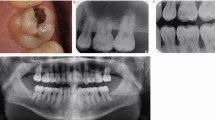Abstract
The invention of rotary instruments not only improved the speed of caries removal but also the destruction of sound tooth substance. Hence, as early as the 1950s, there were attempts to develop a less invasive technique, such as the air-abrasive and ultrasonic techniques, for the purpose of caries removal. The proposed use of air-polishing was published in the early 1980s. Subsequent better understanding of the carious process saw the introduction of the enzyme technique in the late 1980s. Other techniques, such as chemomechanical caries removal and laser systems, have also been attempted and researched during the last four decades to minimise the unnecessary removal of sound tooth substance, although these and other techniques reviewed in this article have not yet superseded the use of rotary instruments. Furthermore, the concept of micro-cavity preparation developed in recent years and the introduction of acid-etch techniques, resin bonding and the use of glass-ionomer cements have also revolutionised the principles of cavity preparation in conservative dentistry. This article reviews the development of these various caries removal techniques and instrumentation and the evolutionary philosophies of cavity preparation promulgated over the last century or so.
Similar content being viewed by others
Author information
Authors and Affiliations
Additional information
Received: 4 May 1998 / Accepted: 20 July 1998
Rights and permissions
About this article
Cite this article
Yip, H., Samaranayake, L. Caries removal techniques and instrumentation: a review. Clinical Oral Investigations 2, 148–154 (1998). https://doi.org/10.1007/s007840050062
Issue Date:
DOI: https://doi.org/10.1007/s007840050062




